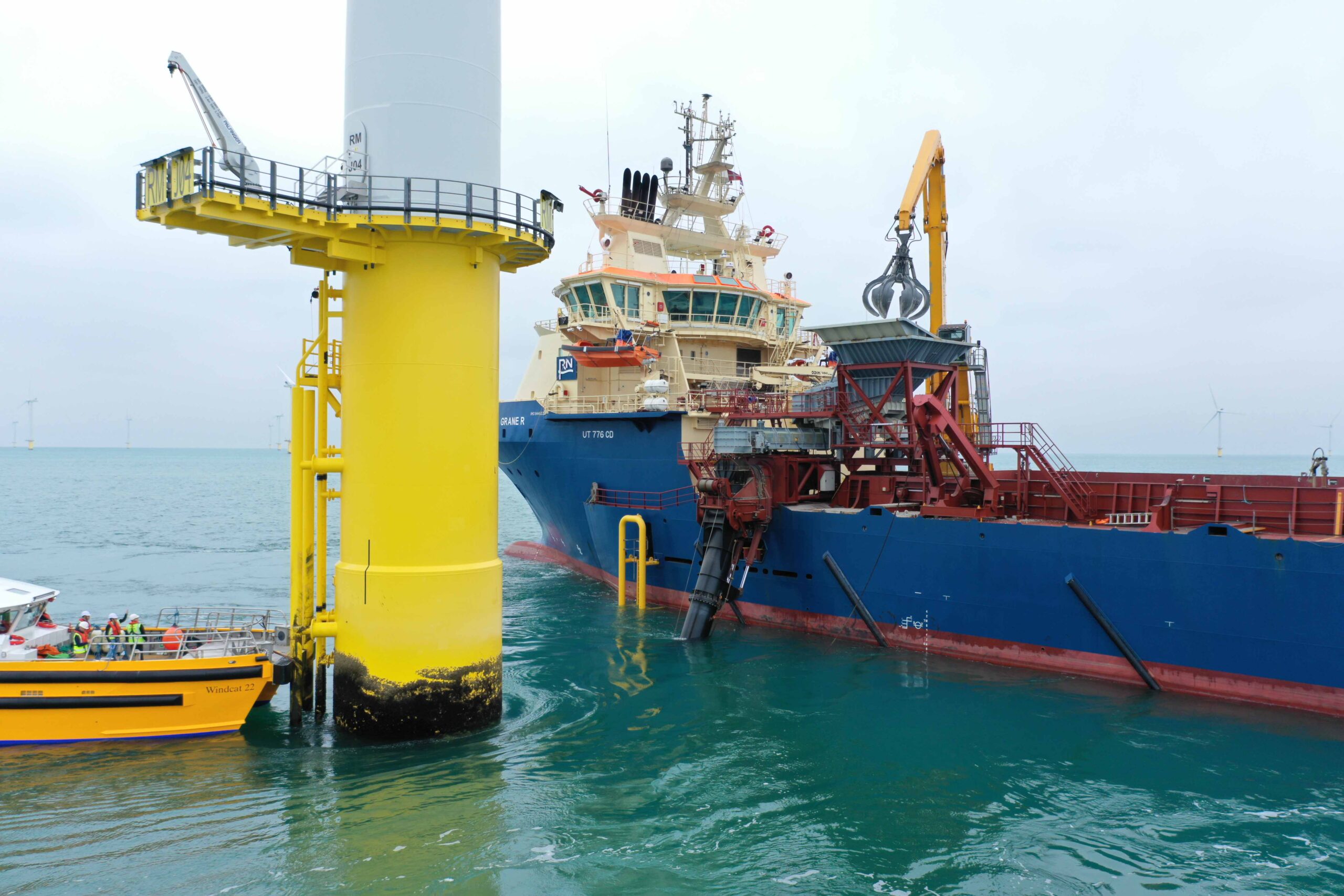One of the largest artificial reefs in the world has been installed at a wind farm off the Sussex coast in what operators describe as a “global first”. The project at the Rampion Offshore Wind Farm saw 75,000 specially designed “reef cubes” placed at the base of a single turbine, representing the first full-scale deployment of eco-engineered scour protection at an operational offshore wind farm.
The reef cubes, ranging in size from 15 to 35 centimetres, were installed over several days by contractor Rohde Nielsen. The installation is part of a nature-inclusive design project, with the cubes helping to protect the turbine from erosion whilst also serving as a home for marine life. The artificial reef covers 820 square metres around the turbine base.
Helen Elphick, an innovations partner at RWE, the company that operates Rampion, said it was exciting to be involved in a trial which was a “sustainable win-win”. She explained: “We need to put scour protection down around our turbines and this kind of a solution both achieves that but it also provides extra habitats for marine species. It’s a real sustainable win-win.”
Sea currents speed up as they pass around the base of wind turbines and can cause erosion, so scour pads—made up of rocks—are often installed around the foot of offshore turbines. This pilot project is looking at ways to replace the rocks with nature-friendly artificial reefs. The solution is designed to protect energy infrastructure from strong currents in the subsea environment whilst creating new and extending existing living marine habitats.
The reef cubes have been designed with a chamber in the middle and a honeycomb texture on the outside to encourage marine life to use them. Samuel Hickling, chief scientific officer at ARC Marine, said the intention was to “replicate the complexity that you get in a natural reef, so you can get reef building species settling on it”.
It is hoped species such as ross worms, anemones, oysters and mussels will live on the reef cubes and that fish and crustaceans will also colonise them over time. RWE says that at just one of the Rampion turbines, the reef cubes are providing a habitat surface area of 25,000 square metres.
The low-carbon reef cubes are made near Truro from recycled waste aggregate from Cornish clay mines. A crane placed the cubes into a hopper which then fed them through a pipe 25 metres down to the sea floor, a process which took two days. Elphick noted the cubes “can be locally manufactured providing jobs as well”.
More than 100 of the cubes have already been used at a scallop farm in Torbay. However, the sheer scale of the 75,000 cubes installed at Rampion means this trial is far bigger. Last year, RWE and ARC Marine also installed 180 reef cubes for testing at RWE’s 48 MW Kårehamn offshore wind farm in Sweden.
The deployment is part of the Reef Enhancement for Scour Protection (RESP) pilot that RWE and ARC Marine announced in July 2025. The project, which took eight years to get off the ground, will be studied for five years to see how effective it is at protecting the turbine from erosion and how biodiverse it becomes.
The RESP pilot will now move into a monitoring phase, with ecological and geophysical surveys to be conducted between 2026 and 2030. The surveys will assess the cubes’ performance as a scour protection system and study how marine life interacts with the structures over time. RWE and ARC Marine will share ecological and engineering data collected through the pilot project from 2026.
The 400 MW Rampion offshore wind farm comprises 116 Vestas 3.45 MW wind turbines installed at a site spanning 70 square kilometres, located between 13 and 20 kilometres off the Sussex coast in the English Channel. The offshore wind farm was officially commissioned in November 2018.
